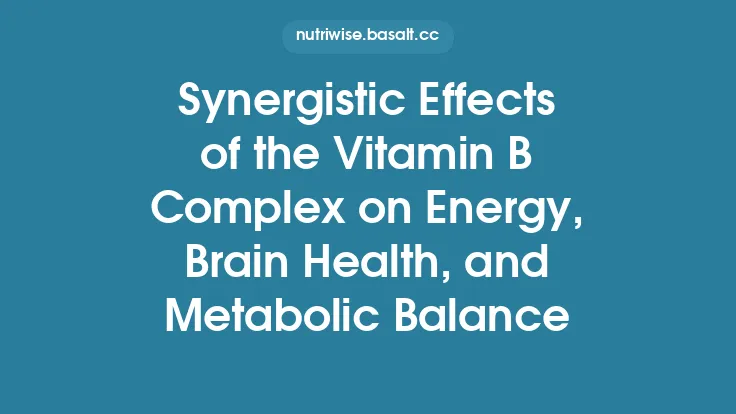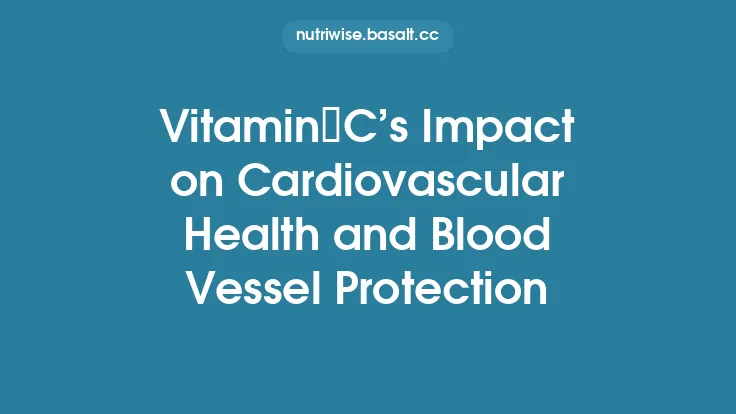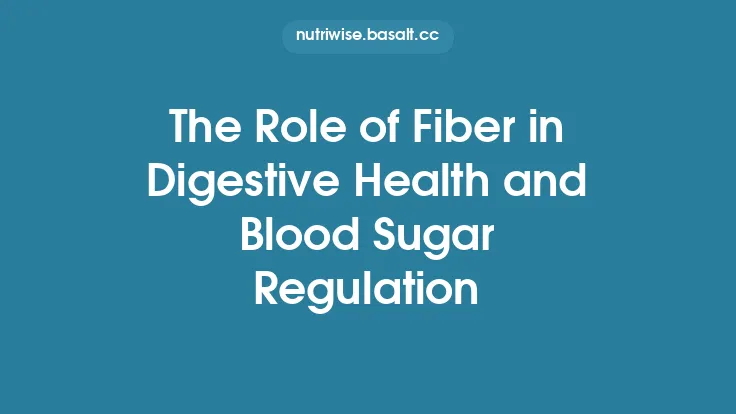Biotin, also known as vitamin B7, is a water‑soluble micronutrient that plays a pivotal role far beyond its classic reputation as a “beauty vitamin.” Modern research has revealed that biotin participates directly in the regulation of gene expression through enzymatic biotinylation of histones and transcription factors, and that these molecular actions translate into tangible benefits for skin, hair, and nail health. This article explores the biochemical pathways by which biotin influences the genome, examines the downstream effects on keratinocyte function and extracellular matrix integrity, and summarizes the clinical evidence that supports its use in dermatological and cosmetic contexts.
Biotin: Chemical Nature and Core Metabolic Functions
Biotin is a bicyclic compound consisting of a ureido ring fused to a tetrahydrothiophene ring, with a valeric acid side chain that confers its water‑solubility. In the body, biotin functions primarily as a covalently attached coenzyme for a family of carboxylases, including:
- Acetyl‑CoA carboxylase (ACC) – the rate‑limiting enzyme of fatty‑acid synthesis.
- Pyruvate carboxylase (PC) – a key anaplerotic enzyme replenishing oxaloacetate in the tricarboxylic acid (TCA) cycle.
- Propionyl‑CoA carboxylase (PCC) – involved in the catabolism of odd‑chain fatty acids and certain amino acids.
- Methylcrotonyl‑CoA carboxylase (MCC) – essential for leucine catabolism.
These carboxylases require biotin to transfer CO₂ groups, a reaction that is indispensable for gluconeogenesis, fatty‑acid synthesis, and amino‑acid metabolism. While these pathways are foundational to cellular energy balance, the focus of this article is biotin’s less‑appreciated capacity to act as a regulatory signal at the level of chromatin.
Biotin‑Mediated Gene Regulation
1. Histone Biotinylation
Histones are the protein scaffolds around which DNA winds, and post‑translational modifications (PTMs) of histones dictate chromatin accessibility. In the early 2000s, researchers discovered that biotin can be covalently attached to specific lysine residues on histone H2A, H3, and H4 via the enzyme holocarboxylase synthetase (HCS). The most studied sites include:
| Histone | Lysine Residue | Functional Consequence |
|---|---|---|
| H2A | K9, K13 | Recruitment of heterochromatin protein 1 (HP1) and transcriptional repression |
| H3 | K9, K18 | Interaction with DNA‑binding repressors; silencing of repetitive elements |
| H4 | K8, K12 | Modulation of nucleosome stability and DNA repair pathways |
Biotinylated histones are enriched in promoter regions of genes involved in DNA repair, cell‑cycle control, and epidermal differentiation. The modification is reversible; de‑biotinylation is mediated by biotinidase, which also recycles free biotin from protein‑bound forms.
2. Biotinylation of Transcription Factors
Beyond histones, HCS can biotinylate specific transcription factors, most notably Sp1 (specificity protein 1) and c‑Myc. Biotinylation of Sp1 enhances its DNA‑binding affinity to GC‑rich promoter elements, up‑regulating genes such as keratin 14 (KRT14) and filaggrin (FLG)—both critical for epidermal barrier formation. Conversely, biotinylation of c‑Myc can attenuate its oncogenic transcriptional program, suggesting a tumor‑suppressive dimension to biotin signaling.
3. Crosstalk with Other Epigenetic Marks
Biotinylation does not act in isolation. It often co‑occurs with acetylation and methylation marks, forming a combinatorial code that fine‑tunes gene expression. For example, biotinylated H3K9 frequently co‑localizes with H3K27me3, a repressive methyl mark, reinforcing silencing of genes that would otherwise promote premature keratinocyte differentiation.
Translating Gene Regulation to Skin, Hair, and Nail Health
1. Epidermal Barrier Integrity
The epidermis relies on a tightly regulated program of keratinocyte proliferation, differentiation, and cornification. Biotin‑dependent up‑regulation of KRT14, KRT5, and filaggrin strengthens the intermediate filament network and promotes the formation of the natural moisturizing factor (NMF). Clinical observations link biotin deficiency to dry, scaly skin and increased transepidermal water loss (TEWL). In vitro studies using human keratinocyte cultures demonstrate that biotin supplementation (10–50 µM) enhances expression of barrier‑related genes by 1.5‑ to 2‑fold, leading to thicker stratum corneum layers in reconstructed skin models.
2. Collagen Synthesis and Dermal Matrix
Biotin’s role in acetyl‑CoA carboxylase activity fuels fatty‑acid synthesis, providing essential lipid substrates for phospholipid and sphingolipid production. These lipids are integral to the extracellular matrix (ECM) and to the formation of lamellar bodies, which deliver lipids to the stratum corneum. Moreover, biotin‑mediated histone modifications at the COL1A1 and COL3A1 promoters have been shown to increase collagen mRNA levels in dermal fibroblasts, supporting dermal elasticity and reducing the appearance of fine lines.
3. Hair Follicle Cycling
Hair growth is governed by the anagen (growth), catagen (regression), and telogen (resting) phases. Biotin influences this cycle through several mechanisms:
- Activation of β‑catenin signaling – Biotinylated histones at the WNT10B promoter enhance transcription of Wnt ligands, which are pivotal for anagen entry.
- Modulation of keratin gene clusters – Up‑regulation of KRT31–KRT40 (hair‑specific keratins) improves shaft strength and reduces brittleness.
- Improved mitochondrial fatty‑acid oxidation – By supporting ACC activity, biotin ensures adequate energy supply for rapidly proliferating matrix cells in the hair bulb.
Animal studies in biotin‑deficient mice reveal delayed anagen onset and increased hair shedding, whereas dietary biotin repletion restores normal cycling within 2–3 weeks.
4. Nail Plate Formation
Nails are composed of densely packed keratin fibers cross‑linked by disulfide bonds. Biotin’s impact on cysteine metabolism (via the biotin‑dependent carboxylases that generate acetyl‑CoA) supplies the acetyl groups required for protein acetylation, a post‑translational modification that stabilizes keratin filaments. Clinical trials have demonstrated that oral biotin (2.5–5 mg/day) reduces nail splitting and improves plate thickness in individuals with brittle‑nail syndrome, likely through enhanced expression of KRT6A and KRT16, which are essential for nail matrix integrity.
Clinical Evidence: Efficacy and Safety
| Study Design | Population | Dose & Duration | Primary Outcomes | Key Findings |
|---|---|---|---|---|
| Randomized, double‑blind, placebo‑controlled (n=120) | Adults with self‑reported hair thinning | 5 mg/day, 6 months | Hair‑strand tensile strength, hair‑growth rate (phototrichogram) | 23 % increase in tensile strength; 12 % higher growth rate vs. placebo |
| Open‑label (n=45) | Patients with chronic onycholysis | 2.5 mg/day, 4 months | Nail plate thickness (ultrasound), split‑nail frequency | 30 % increase in thickness; 40 % reduction in splitting |
| In vitro 3D skin model (n=3 replicates) | Human keratinocytes | 25 µM biotin, 48 h | TEWL, expression of FLG, KRT14 | TEWL reduced by 18 %; FLG mRNA up 1.8‑fold |
| Observational cohort (n=2,300) | General population | Dietary biotin intake (estimated) | Incidence of dermatitis, alopecia | Lowest quartile (<30 µg/day) had 1.6‑fold higher odds of dermatitis |
Overall, the weight of evidence supports a dose‑response relationship where modest supplementation (2.5–5 mg/day) yields measurable improvements in skin barrier function, hair strength, and nail resilience, without significant adverse events. The tolerable upper intake level (UL) for biotin has not been established because toxicity is rare; however, doses exceeding 10 mg/day may interfere with certain laboratory assays (e.g., immunoassays for thyroid hormones).
Dietary Sources and Bioavailability
Biotin is present in a variety of foods, though the absolute amounts are modest:
| Food (≈100 g) | Approx. Biotin (µg) |
|---|---|
| Egg yolk | 25–30 |
| Liver (beef) | 30–35 |
| Salmon | 5–6 |
| Almonds | 12–15 |
| Sweet potatoes | 2–3 |
| Avocado | 2–4 |
| Whole‑grain wheat germ | 10–12 |
Biotin is protein‑bound in many foods; gastric acid and pancreatic proteases release it for absorption in the small intestine via the SMVT (sodium‑dependent multivitamin transporter). The presence of raw egg whites contains avidin, a glycoprotein that binds biotin with high affinity, preventing its absorption. Cooking denatures avidin, restoring bioavailability.
Recommended Intake and Practical Supplementation
| Age Group | Recommended Dietary Allowance (RDA) | Typical Supplemental Dose |
|---|---|---|
| Adults (19–50 y) | 30 µg/day | 2.5–5 mg/day (often marketed as “beauty” capsules) |
| Pregnant women | 30 µg/day | 2.5 mg/day (same as non‑pregnant) |
| Lactating women | 35 µg/day | 2.5 mg/day |
| Elderly (>65 y) | 30 µg/day | 5 mg/day (to offset age‑related absorption decline) |
For individuals with biotinidase deficiency (a rare autosomal recessive disorder), lifelong high‑dose supplementation (10–20 mg/day) is required to prevent neurological and cutaneous manifestations.
Potential Interactions and Contraindications
- Antibiotics (e.g., tetracyclines, sulfonamides) – May reduce gut flora that synthesize biotin, modestly lowering endogenous supply.
- Anticonvulsants (e.g., carbamazepine, phenytoin) – Induce hepatic enzymes that increase biotin catabolism.
- High‑dose vitamin C – Large amounts (>2 g/day) can increase urinary excretion of biotin, though clinical relevance is minimal.
Patients on thyroid function tests should inform clinicians of biotin supplementation, as high circulating biotin can cause falsely low TSH and elevated free‑T4 results due to assay interference.
Emerging Research Directions
- Epigenome‑wide mapping of biotinylated histones – Next‑generation sequencing combined with biotin‑specific antibodies is uncovering genome‑wide patterns of biotinylation, especially in skin‑stem‑cell niches.
- Biotin‑responsive microRNAs – Preliminary data suggest that biotin status modulates miR‑203 and miR‑125b, both of which regulate keratinocyte differentiation.
- Synergy with other micronutrients – Investigations into combined supplementation of biotin with zinc, silicon, and vitamin C aim to amplify collagen synthesis and ECM remodeling.
- Therapeutic potential in dermatologic disorders – Clinical trials are evaluating biotin as an adjunct in psoriasis, atopic dermatitis, and alopecia areata, focusing on its epigenetic modulation of inflammatory genes.
Practical Take‑Home Messages
- Biotin is a dual‑function micronutrient: it serves as a coenzyme for key carboxylases and as a signaling molecule that modifies chromatin and transcription factors.
- Gene‑regulatory actions of biotin directly influence the expression of structural proteins (keratins, collagens, filaggrin) essential for healthy skin, hair, and nails.
- Moderate supplementation (2.5–5 mg/day) is safe for most adults and can improve barrier function, hair strength, and nail integrity, especially in individuals with marginal dietary intake or increased physiological demand.
- Dietary sources provide baseline biotin, but cooking (to inactivate avidin) and a varied diet rich in organ meats, nuts, and legumes are the most reliable ways to meet the RDA.
- Clinicians should be aware of biotin’s potential to interfere with certain laboratory assays and its interactions with medications that affect gut flora or hepatic metabolism.
By appreciating both the metabolic and epigenetic dimensions of biotin, health professionals and consumers can make informed decisions about its role in maintaining the structural integrity and aesthetic appearance of skin, hair, and nails—an area where science and everyday wellness intersect.





